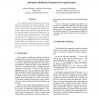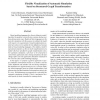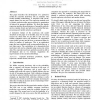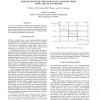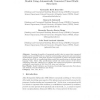1826 search results - page 24 / 366 » Using Random Forests in the Structured Language Model |
ICPR
2008
IEEE
14 years 3 months ago
2008
IEEE
Given a bipartite graph of collaborative ratings, the task of recommendation and rating prediction can be modeled with graph kernels. We interpret these graph kernels as the inver...
VL
2008
IEEE
14 years 3 months ago
2008
IEEE
Visual modeling languages for discrete behavior modeling allow the modeler to describe how systems develop over time during system runs. Models of these languages are the basis fo...
AUSDM
2007
Springer
14 years 2 months ago
2007
Springer
This paper describes the development of a predictive model for corporate insolvency risk in Australia. The model building methodology is empirical with out-ofsample future year te...
ICIP
2003
IEEE
14 years 1 months ago
2003
IEEE
A new class of multiscale multidimensional stochastic processes called spatial random trees was recently introduced in [9]. The model is based on multiscale stochastic trees with ...
JUCS
2010
13 years 3 months ago
2010
: Assessing the quality of conceptual models is key to ensure that conceptual models can be used effectively as a basis for understanding, agreement and construction of information...
